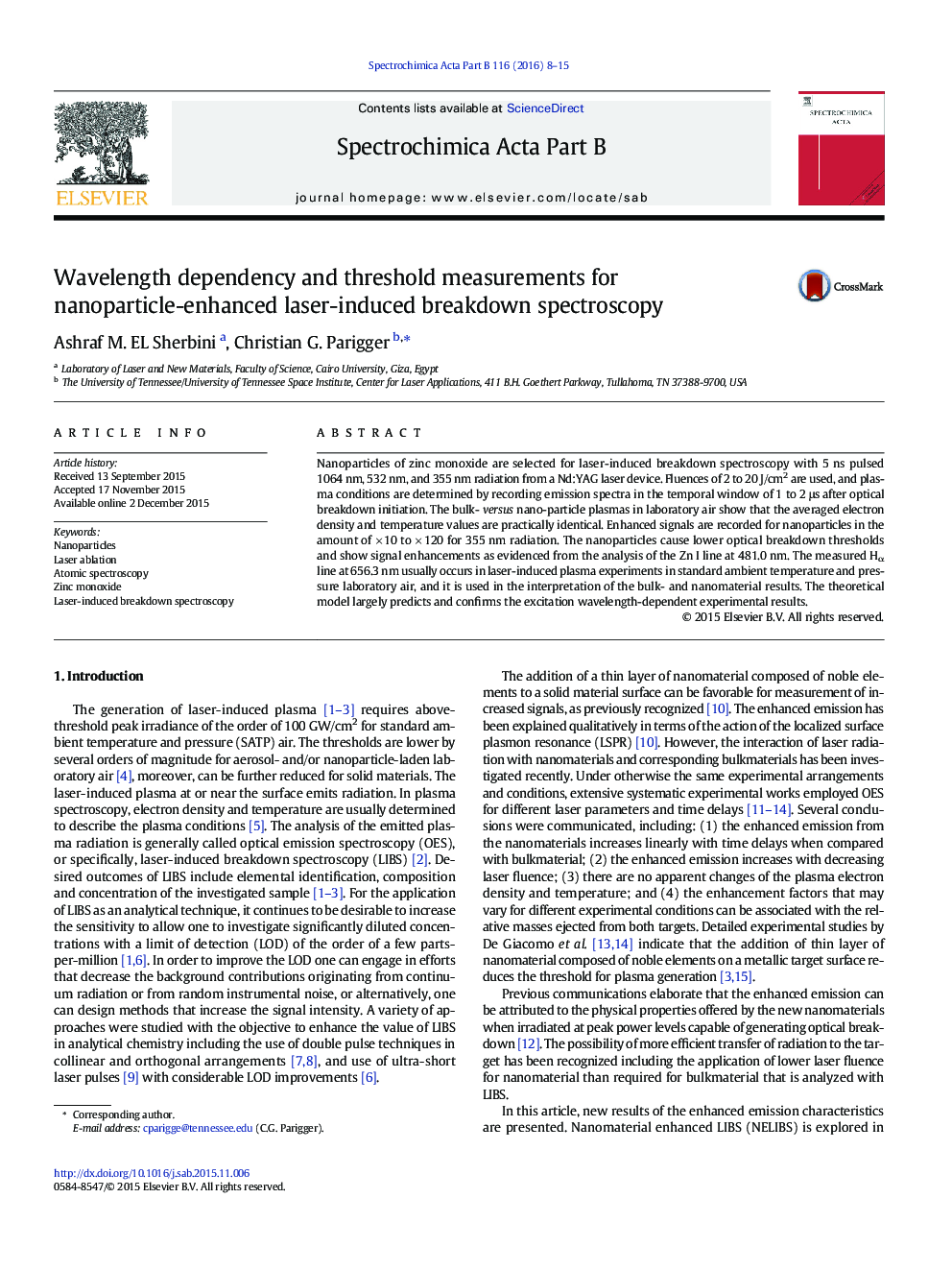| کد مقاله | کد نشریه | سال انتشار | مقاله انگلیسی | نسخه تمام متن |
|---|---|---|---|---|
| 1239522 | 1495687 | 2016 | 8 صفحه PDF | دانلود رایگان |
• Measurements of ZnO nano- and bulkmaterial characteristics with laser-induced plasma spectroscopy.
• Comparisons of fluence thresholds for plasma initiation for nanoparticle and bulk-material.
• Wavelength dependency of enhanced emissions from nanoparticles.
• Presentation of a model to predict the fluence thresholds.
• Nanoparticle signal enhancements of the order of × 100 at 355 nm.
Nanoparticles of zinc monoxide are selected for laser-induced breakdown spectroscopy with 5 ns pulsed 1064 nm, 532 nm, and 355 nm radiation from a Nd:YAG laser device. Fluences of 2 to 20 J/cm2 are used, and plasma conditions are determined by recording emission spectra in the temporal window of 1 to 2 μs after optical breakdown initiation. The bulk- versus nano-particle plasmas in laboratory air show that the averaged electron density and temperature values are practically identical. Enhanced signals are recorded for nanoparticles in the amount of × 10 to × 120 for 355 nm radiation. The nanoparticles cause lower optical breakdown thresholds and show signal enhancements as evidenced from the analysis of the Zn I line at 481.0 nm. The measured Hα line at 656.3 nm usually occurs in laser-induced plasma experiments in standard ambient temperature and pressure laboratory air, and it is used in the interpretation of the bulk- and nanomaterial results. The theoretical model largely predicts and confirms the excitation wavelength-dependent experimental results.
Journal: Spectrochimica Acta Part B: Atomic Spectroscopy - Volume 116, 1 February 2016, Pages 8–15
